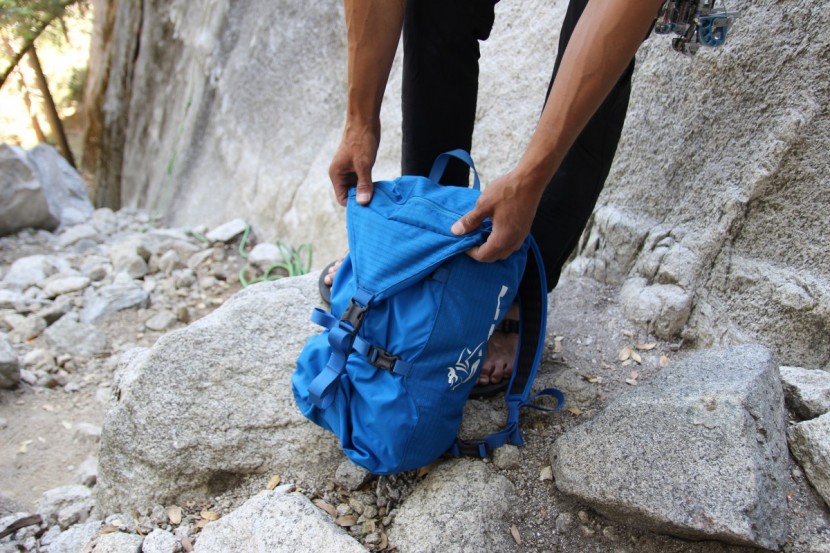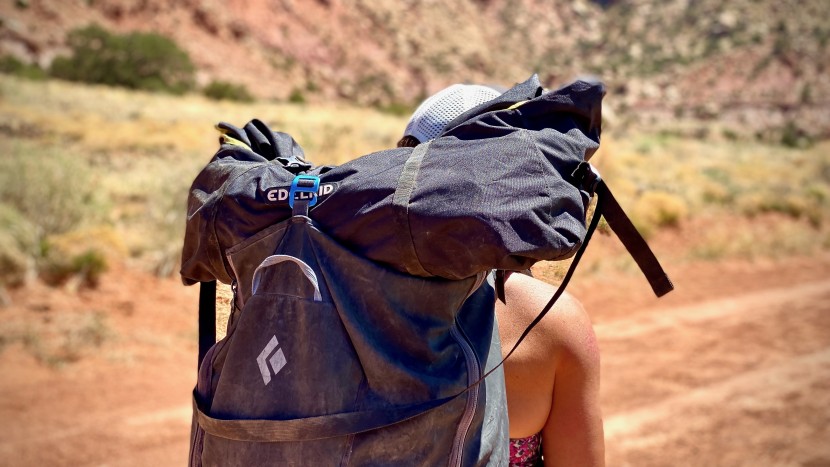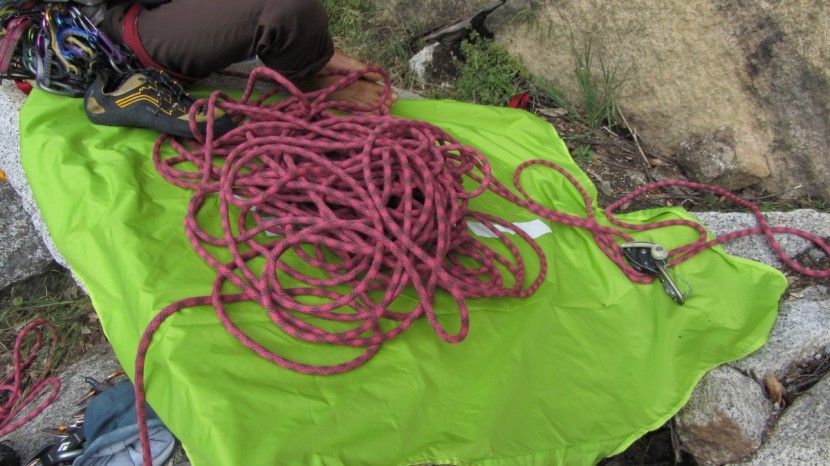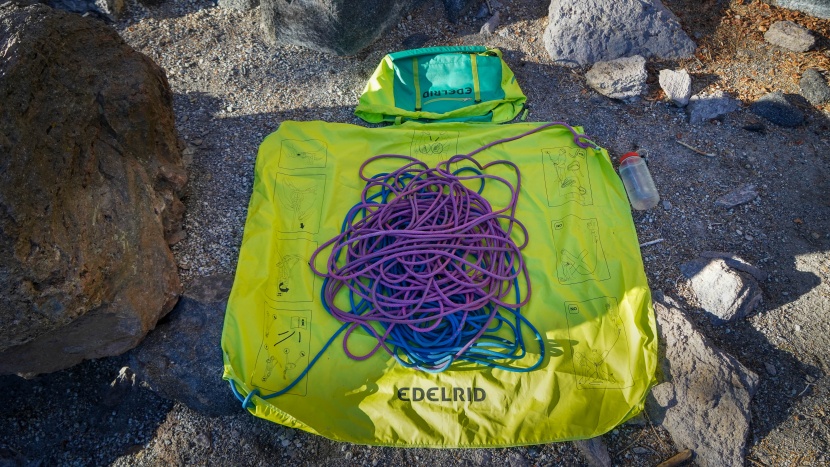We took our contenders out near and far all across the American West. Most of our rope bag testing was done in Indian Creek, Red Rocks, Yosemite Valley, Tuolumne Meadows, and the Santa Monica Mountains, ensuring a wide variety of terrain. We hauled them over long distances and big approaches and dragged them in between routes that were right next to each other. Side-by-side comparisons were done by taking out multiple bags and flaking ropes from one tarp to another and packing them side by side to see which one was quicker or more efficient. After miles of approaching and countless pitches, we rated each model according to four key rating metrics to determine which ones are worthy of keeping your cordage safe.
Packability
This metric encompasses pack volume and how well each bag can be compressed when loaded with a rope and basic climbing gear. To evaluate packability, we packed each bag with a standard assortment of gear that the average climber would want at the crag. This consisted of a 70-meter rope, one pair of shoes, a chalk bag, a dozen quickdraws, and a harness. Not all of the models could fit this much gear, and we packed as much as we could in each one. Some packs had external straps that were useful for clipping bulkier equipment and layers.
For long approaches and heavier loads, we preferred models with compression straps or some features that can be used to reduce volume. This made a significant difference when it came to comfort and stability.
Carrying Comfort
To assess carrying comfort, we made sure to spend plenty of time hiking with each bag. Every bag was carried for at least one 30 minute approach, and some were taken on hikes that went well over an hour. Some were far more comfortable than others, and the most significant factor in this was whether or not a bag could be carried as a backpack. Models with two straps tend to be much more comfortable than their single-strap counterparts, and we almost always preferred backpack-style models for approaches that were longer than a quarter of a mile.
In addition to strap design, we also accounted for cushioning and additional support straps that would increase comfort. High performers had cushioned straps, and some models even feature padded back panels. Though less common, we did appreciate bags with hip belts or chest straps, especially if they had enough space to be loaded with a full day's worth of gear in addition to a rope.
Rope Protection
Our rope protection testing was fairly straightforward and mostly consisted of measuring each tarp and subjectively rating each bag's durability after extended use. Most of the models that we tested were more than adequate for the average climber, who typically drives to the crag and doesn't drag the tarp over too many abrasive surfaces. Our rope protection tests mostly consisted of using the rope bags on a variety of uneven surfaces and seeing which ones did the best job of keeping a full rope off the ground with a bit of room to spare. In addition to tarp size, we also noted which models have colored loops for tying the ends of your rope.
Ease of Use
We evaluated ease of use by noting any key features that made bags more convenient or pleasant to use. These included zippered pouches, unique closure systems, internal compartments, and external straps. The most important feature for ease of use was a zippered pouch that had space for keys, a wallet, and other small loose items. We never climb with keys in our pocket and don't know many people who do. It's nice to have a separate space for valuables to save them from getting lost at the crag.





